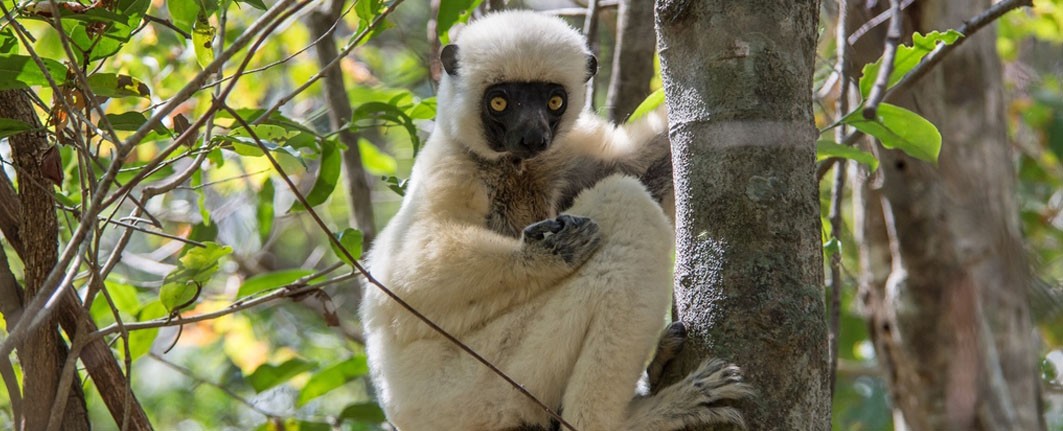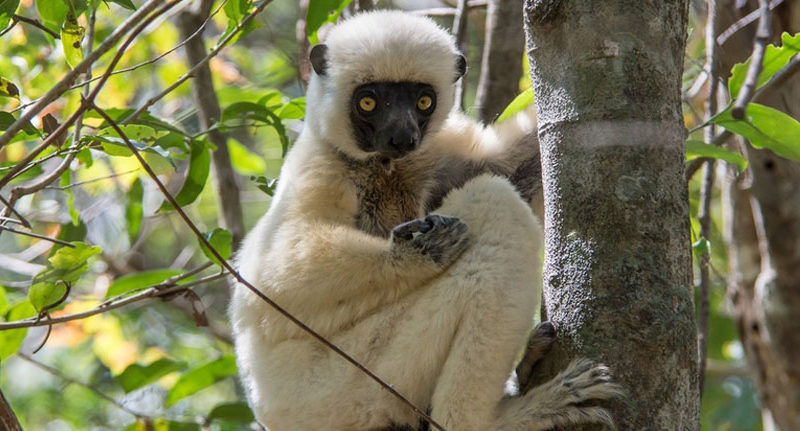
Madagascar Western Sifakas: The Majestic Lemurs of Western Madagascar
Madagascar is a treasure trove of biodiversity, including the renowned Madagascar Western Sifakas. The island is home to some of the world’s most unique primates, and among them, the Madagascar Western Sifakas stand out for their striking white fur, black faces, and remarkable leaping abilities. Observing these lemurs in their natural habitat is a highlight for wildlife enthusiasts exploring the island’s dry forests.
What Are These Western Sifakas?
These sifakas are large, charismatic lemurs closely related to Verreaux’s Sifaka. They are easily recognized by their white coat and black facial markings. Their loud “see-fak” calls make them easy to locate in the forest, providing unforgettable wildlife encounters for those interested in Western Sifakas.
Appearance and Identification
The lemurs have a tall, elegant frame with mostly white fur and contrasting black faces. Adults usually live in small groups, often ranging from 3 to 10 individuals. Their social behavior and playful interactions make them a favorite among visitors and researchers alike who come to see Madagascar’s Western Sifakas.
Distribution and Habitat of the Madagascar Western Sifakas
Native to the dry forests of central western Madagascar, these lemurs have adapted to more open, arid habitats. Unlike their eastern rainforest cousins, they live in lower densities and require larger home ranges to find sufficient food, typical of Western Sifakas.
Adaptations to Dry Forest Life
These lemurs are agile leapers, capable of moving between trees and across the forest floor. Their diet consists mainly of leaves, fruits, flowers, and seeds, which varies with seasonal availability. Small group sizes and coordinated movements help them survive in sparse habitats, which is a characteristic behavior of Madagascar Western Sifakas.
Behavior and Diet of the Madagascar Western Sifakas
These sifakas are diurnal, spending most of the day feeding, grooming, and leaping through the forest. Social bonds within groups are strong, and reproduction typically results in a single offspring cared for by multiple group members. Watching their intricate interactions is a highlight of any wildlife tour focusing on Western Sifakas.
Best Places to See Them
The most accessible location to spot these lemurs is Tsingy de Bemaraha National Park, where sightings are frequent. For a more secluded experience, the remote Beanka Forest north of Bemaraha offers encounters with tamer individuals, ideal for those interested in Madagascar Western Sifakas.
Wildlife Watching Tips
-
Morning Activity: They are most active in the early hours of their habitat in their territory.
-
Move Slowly: Sudden movements may disturb them.
-
Local Guides: Guides can lead you to the best groups and explain their behavior.
Why They Are Unique
These lemurs are notable for their striking appearance and impressive leaping abilities. The Western Sifakas are iconic creatures, and protecting their dry forest habitats is crucial for their survival and for maintaining Madagascar’s extraordinary biodiversity.
HT AGENCY TOURS
Luxury Madagascar with the best luxury African safari tours packages. Discover your next perfect destination with HT Agency Tours

